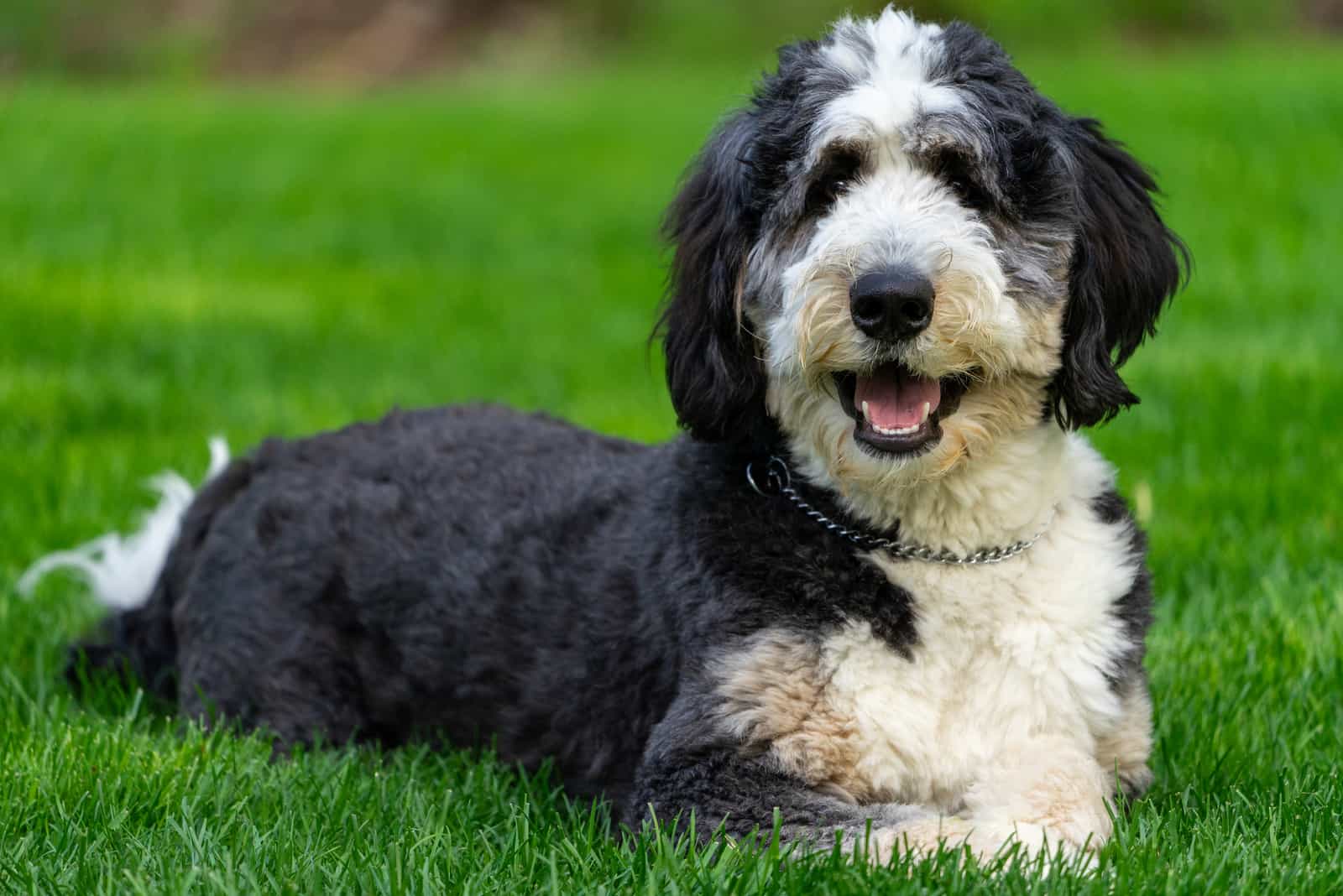If you’re thinking about getting Bernedoodles, you might find yourself confused with all the lettering that breeders use. There are F1 Bernedoodles, F1B Bernedoodles, F1BB Bernedoodles…
What do these labels mean? Is this something that’s important for you to know?
Here’s all you need to know!
Terminology
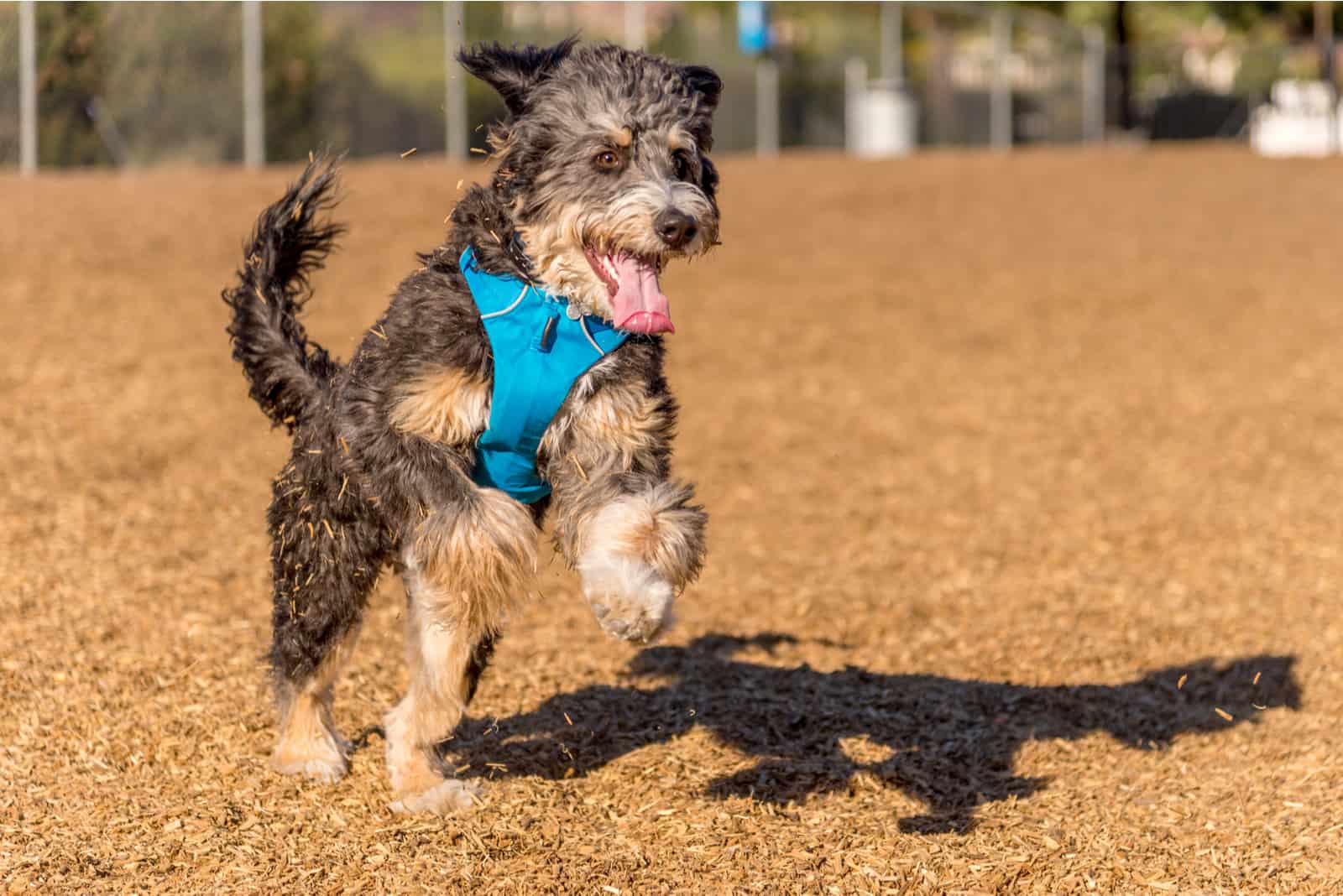
While these labels might seem unnecessary or complicated, there is a reason why they are there. These letters and numbers imply a particular Bernedoodle generation that influences a dog’s genetic makeup.
Let’s simplify.
As you probably already know, the Bernedoodle is a designer breed (also called a hybrid breed) made from mating a Poodle with a Bernese Mountain Dog. They aren’t considered purebred dogs, and there isn’t a list of specific characteristics Bernedoodles should have.
Designer breeds are somewhat tricky, as their genetics tend to vary a lot compared to most purebred dogs, such as their parents. In other words, the percentage of Poodle and Bernese Mountain Dog DNA changes over time as generations pass.
Because of this, you might end up with a puppy that doesn’t look the way you thought it would. In fact, the pup might not even look anything like any of his parents!
All of this depends on whether you breed two purebred dogs of different breeds, two hybrid breeds, a hybrid breed with a purebred dog…
To create some order in this chaos hybrid breeds cause, breeders created these labels.
These letters and numbers imply how many generations have passed since the first time a crossbreed was made.
While all of this might seem a bit complicated, it’s actually quite straightforward once you understand the terminology and the way these labels are made.
There is a pattern behind creating this mix of letters and numbers, and you’ll learn quickly how to label hybrid dogs on your own!
We’ll explain this further with the example of an F1B Bernedoodle – but the same could be used with any designer breed, such as a Goldendoodle or a Labradoodle.
The F means ‘filial hybrid.’ This signals that a Bernedoodle isn’t a purebred dog but rather a hybrid that came from two purebreds of different species – in this case, a Bernese Mountain Dog and a Poodle.
The number 1 represents the Bernedoodle’s generation. Since we’re talking about F1B Bernedoodles, this means they are the first generation of offspring. Similarly, F2B would indicate the existence of the second generation, and so on.
Finally, the letter B implies the meaning of backcross. The backcross, or a generation cross, is a term that means breeding in such a way that the breeder is returning back to a 100% Poodle generation.
In most cases, breeders will quickly begin breeding back to a 100% Poodle since this breed is considered non-shedding and hypoallergenic.
This, however, doesn’t mean that backcrosses need to revert back to the Poodle’s genes. Sometimes, the breeder would want their dogs to have more Berner genes, or more Labrador, Golden, Australian Sheperd genetics, etc.
Bernedoodle Generations
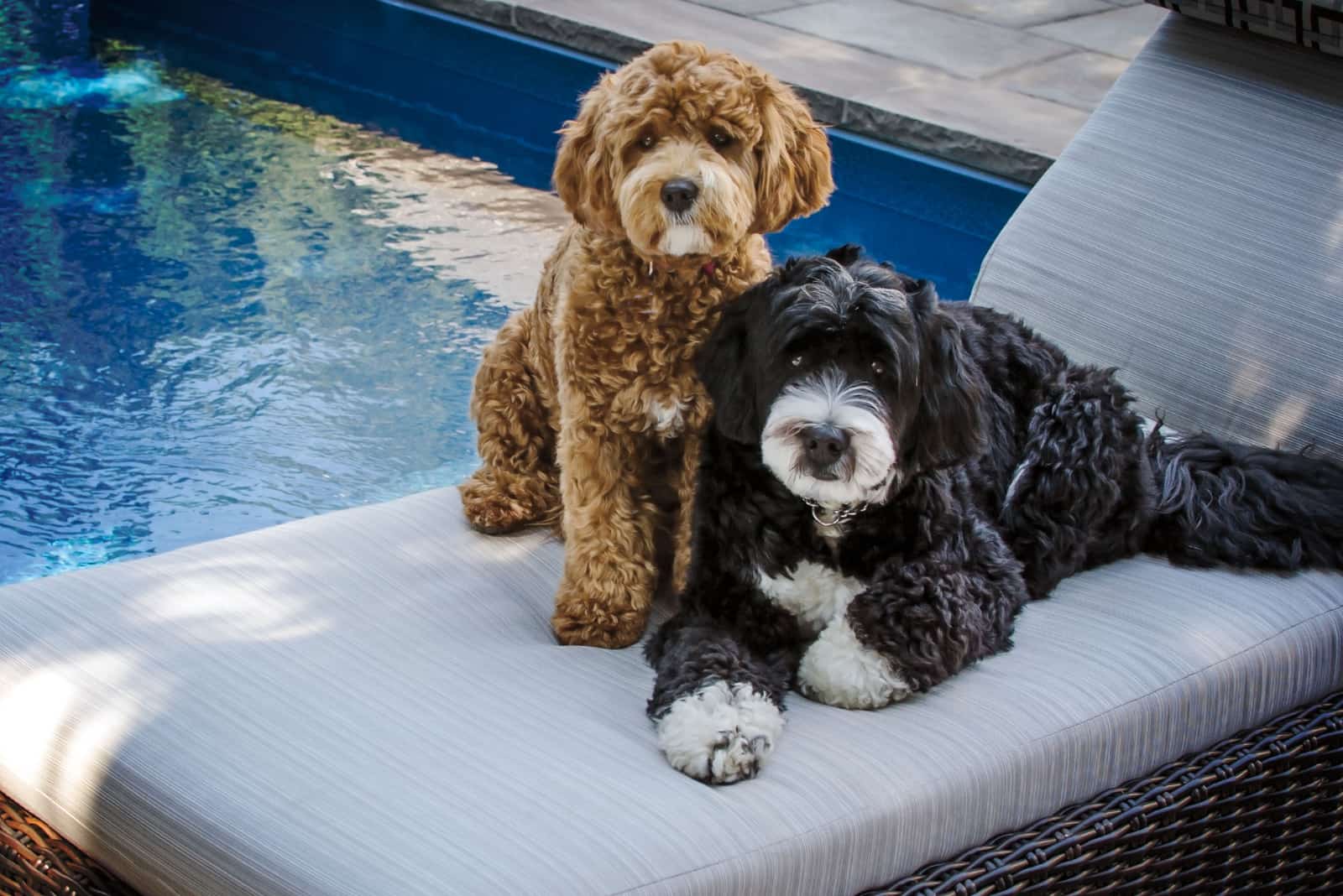
All reputable breeders will label their puppies, letting you know which Bernedoodle generation the offspring is. This way, you’ll know the genetic background of the dog you’re considering buying.
If you aren’t certain about what generation of Bernedoodles you want, it would be smart to consider a generation with more Poodle genes. This is typically what people prefer, although the choice is entirely up to you.
Bernedoodles with more Poodle in their genetics are mostly very little to non-shedding and won’t cause many issues for people with allergies. In fact, this is why most breeders prefer backcross breeding their dogs to 100% Poodles.
Keep in mind that, for several different reasons, breeders might also create F1B Bernedoodles with more Bernese Mountain Dogs in them. So, just because a dog is F1B doesn’t instantly mean they are hypoallergenic.
However, this option is unlikely, and most F1B Bernedoodles have more Poodle than Bernese Mountain Dogs. Of course, it would be wise to ask the breeder to clear this up, as genetics can’t always be distinguished just by looking at a puppy.
Also, generations can influence how much a Bernedoodle costs. This is because certain generations have qualities that more people will want, making it a higher-priced pup.
Now, we’ll explain the most popular Bernedoodle generations.
F1 Bernedoodles
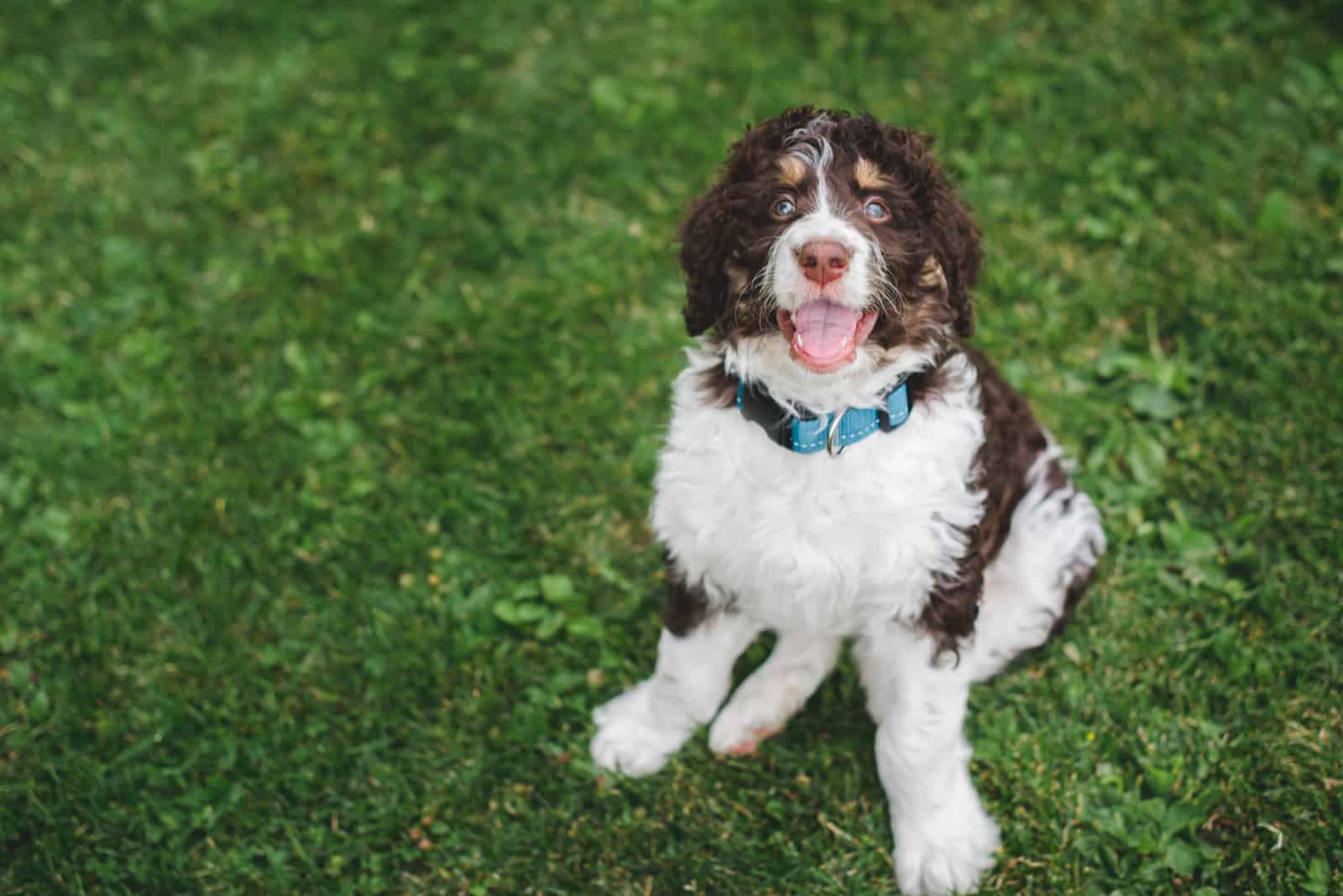
An F1 Bernedoodle is the initial generation of Bernedoodle. It’s 50% Poodle and 50% Bernese Mountain Dog, as it’s the cross of two purebreds.
It doesn’t matter if the parent is a Standard Poodle or a Miniature Poodle; the label is still the same. The outcome, however, could be Standard Bernedoodle or Mini Bernedoodle puppies, respectively.
When people hear of Bernedoodles, they typically think of F1 Bernedoodle. Some dog lovers don’t even know that you can mate two adult Bernedoodles to get more puppies of the same breed!
However, since this is the first-generation offspring of two dogs of different breeds, their looks and coat type can vary significantly.
For example, they can have both flat, straight fur, or curly coats. They’ll rarely be wavy, as a wavy coat usually implies a more significant amount of Poodle genetics.
Overall, these puppies are the most unpredictable ones, and there is no absolute way of knowing what the F1 Doodle litter will look like.
There is one important advantage this generation has, and that is hybrid vigor.
Hybrid vigor means the first generation of crossbreeds will be much healthier than any of their purebred parents, as they don’t inherit genetic issues that purebred dogs pass onto one another.
Since Bernedoodles are designer breeds, they won’t have many health problems that either the Poodle or Bernese Mountain Dog suffer from. This also increases their lifespan.
F1B Bernedoodles
An F1B Bernedoodle is a cross between a first-generation (F1) Bernedoodle with a purebred parent of either breed – usually, a Poodle, resulting in a pup that is 75% Poodle and 25% Bernese Mountain Dog.
Breeders prefer creating an F1B Bernedoodle with more Poodle genes because there aren’t many advantages to creating a 75% Berner Doodle.
Since F1B Bernedoodles are crossbreeds of an F1 Bernedoodle and a purebred parent, they are usually referred to as backcrosses, which is why they are called F1B.
This is the most popular generation of Bernedoodles among dog owners, as they are the most hypoallergenic of all Bernedoodles. The Poodle’s genes and other attributes, such as coat type, make them easier to maintain, as you won’t have to vacuum your furniture after them.
Also, F1B Bernedoodles still have some advantages of hybrid vigor, although, as they are the second generation of mixes, they lose some of the health advantages of F1 Bernedoodles.
It’s worth noting that, while most Bernedoodles have a low shedding wavy coat, some have curly fur that needs plenty of grooming to prevent matting. However, since they are excellent for people with mild allergies, this additional maintenance is a risk worth taking.
F1BB Bernedoodles
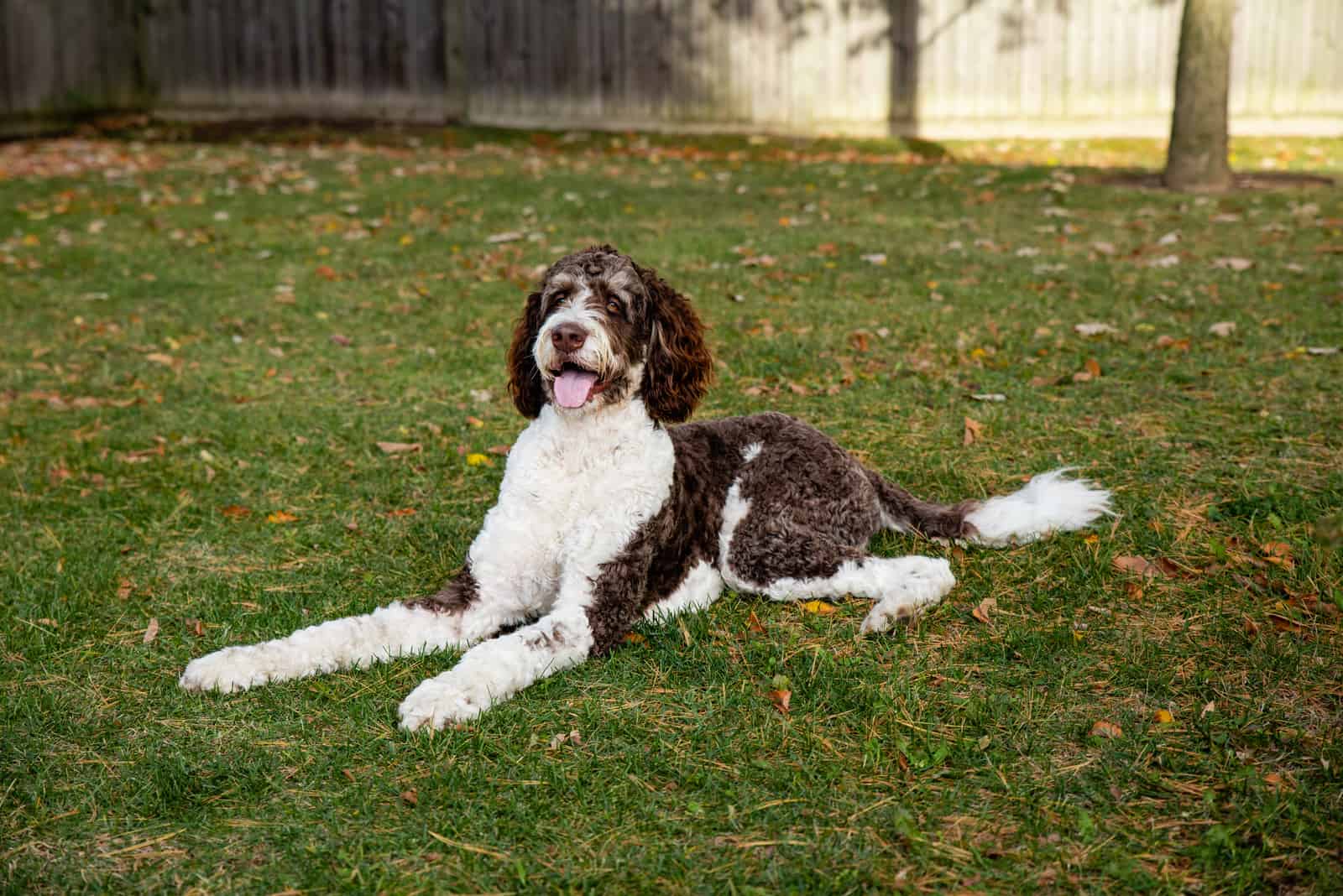
You have probably caught the pattern by now, so you can guess what an F1BB Bernedoodle is.
This is a Doodle which is a backcross between an F1B Bernedoodle and a purebred parent – which, once again, is typically a Poodle.
The second ‘B’ in ‘F1BB’ means that this is a second backcross with a purebred parent.
These Bernedoodles shed even less and are more hypoallergenic than F1B Bernedoodles as they are 87.5% Poodle and 12.5% Bernese Mountain Dog.
Of all the first generations of Bernedoodles, this one is the best choice for allergy sufferers, as it has a considerable amount of Poodle genes – seven-eights of their genes belong to the Poodle!
Also, this type of Bernedoodle will resemble its Poodle parent much more than other generations. These dogs have curly hair that will require regular brushing, as well as a significant amount of grooming. Their fur will matt easily, and you need to take good care of it.
Their coat colors will also resemble the Poodles’. In other words, you can find them in all the same colors and patterns as a purebred Poodle. This includes phantom, sable, tricolor, even merle!
Since this is basically the third generation of this dog breed, these dogs won’t have too many hybrid vigor qualities.
Also, despite the number ‘1’ in their label, these dogs can be considered multi-generation, as they are past the second generation of puppies.
F2 Bernedoodles
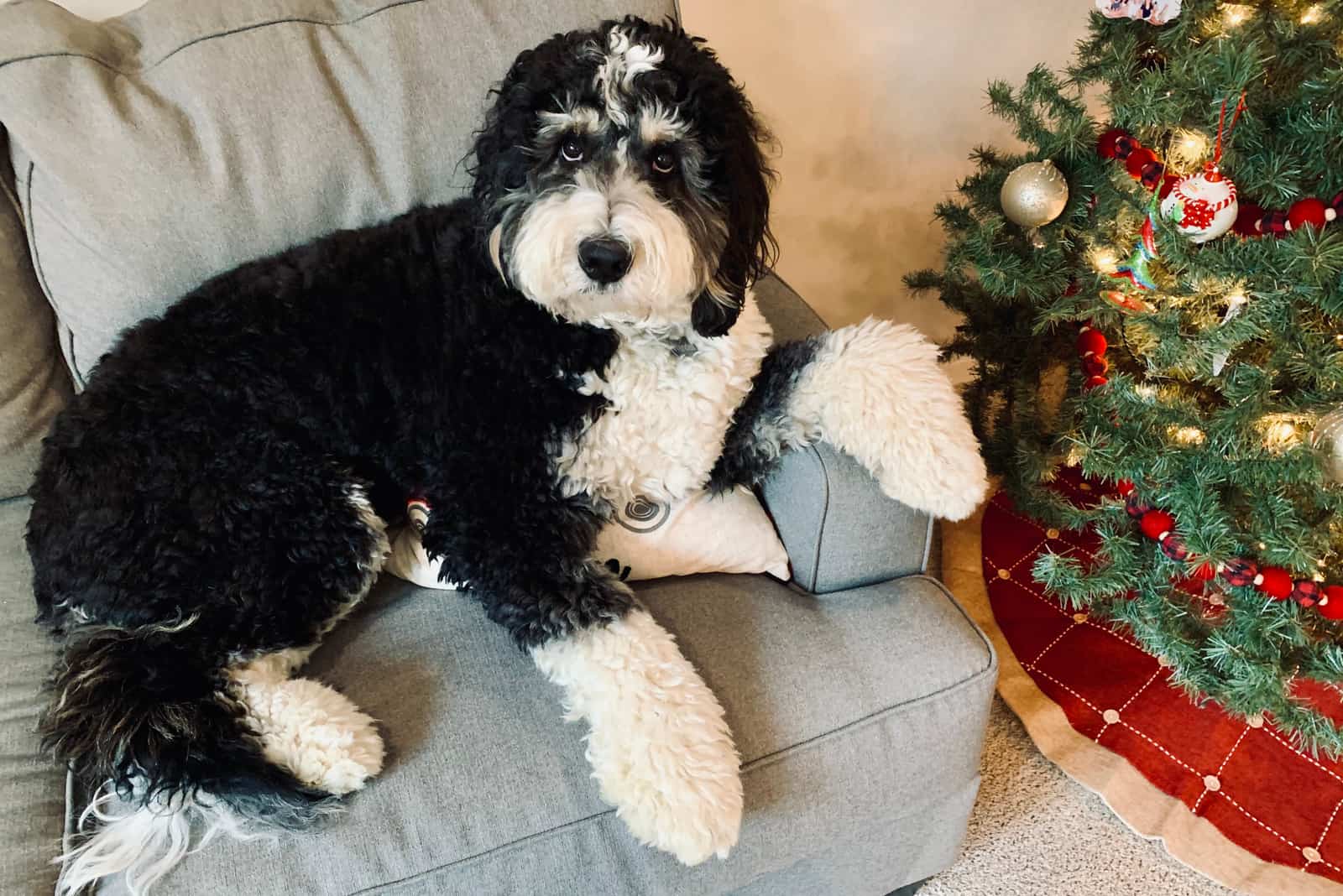
F2 Bernedoodles are the second generation of Doodles that kept their 50% Poodle and 50% Bernese Mountain Dog status. This is a cross between two F1 Bernedoodles, meaning they look pretty much the same as the first generation of this crossbreed.
While it might seem like this is the perfect generation as you’ll have some sort of idea of what your Bernedoodle puppy might look like – the truth is quite the opposite.
These pups might exhibit some hidden genes from their grandparents that didn’t show up in the first generation. For example, while both your Bernedoodles are standard, you might get a tiny Bernedoodle puppy if the grandparent was a Toy Poodle!
Also, it’s difficult to predict the amount of shedding and how much dander it will produce. Overall, the general rule of thumb is: If you want a dog that doesn’t shed and is hypoallergenic, you shouldn’t get an F2B Bernedoodle.
In fact, this is the generation of Doodles most likely to shed and cause problems for people who suffer from dog allergies.
F2B Bernedoodles
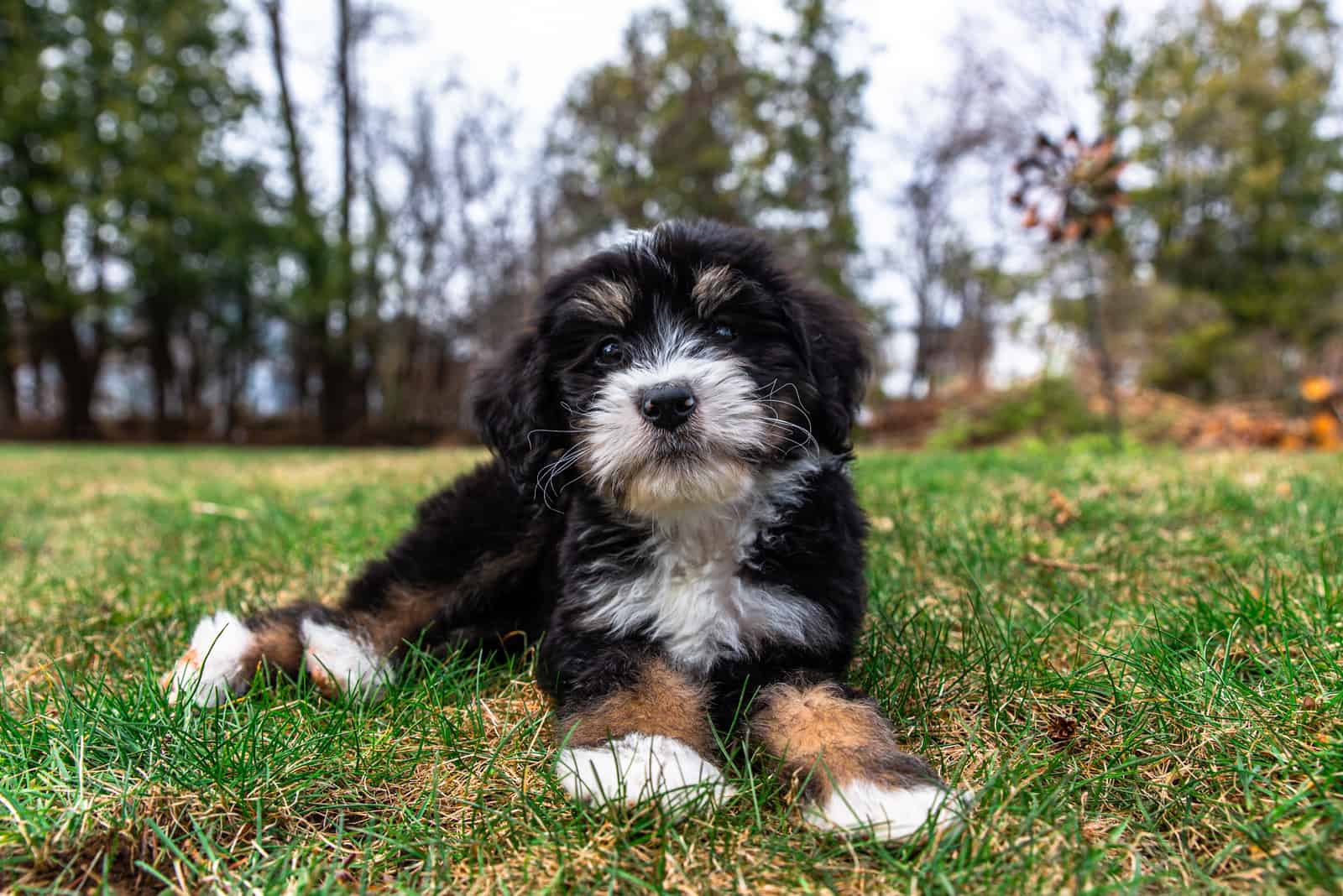
An F2B Bernedoodle is bred when you mix the second generation of Bernedoodle with one purebred parent (a Poodle). This makes them 62.5% Poodle and 37.5% Berner.
Again, some breeders will prefer breeding an F2B Bernedoodle with a Bernese Mountain Dog instead of a Poodle, but this rarely happens.
Another way you can get an F2B Bernedoodle is by breeding two F1B Bernedoodles. This will result in a dog that is 75% Poodle.
Either way, an F2B Bernedoodle will have much more genes from one parent breed than the other.
If the purebred parent is a Poodle, the F2B Bernedoodle generation will have plenty of Poodle genetics, meaning it will typically have a wavy or curly low shedding coat. Yes, this makes them low shedding and pretty much hypoallergenic.
Of course, as is the case with all hybrid dogs, you can never be entirely certain what the offspring’s characteristics will be. Sometimes, in a litter of F2B Bernedoodles, you can get a puppy or two with a straight coat that sheds significantly.
This is a multi-generation Doodle, as they are technically the third generation.
If your breeder is selling F2B Bernedoodles, make sure to ask them about the genetic background of your future puppy. You should always know what you’re getting into and how allergy-friendly your pup is.
F2BB Bernedoodles
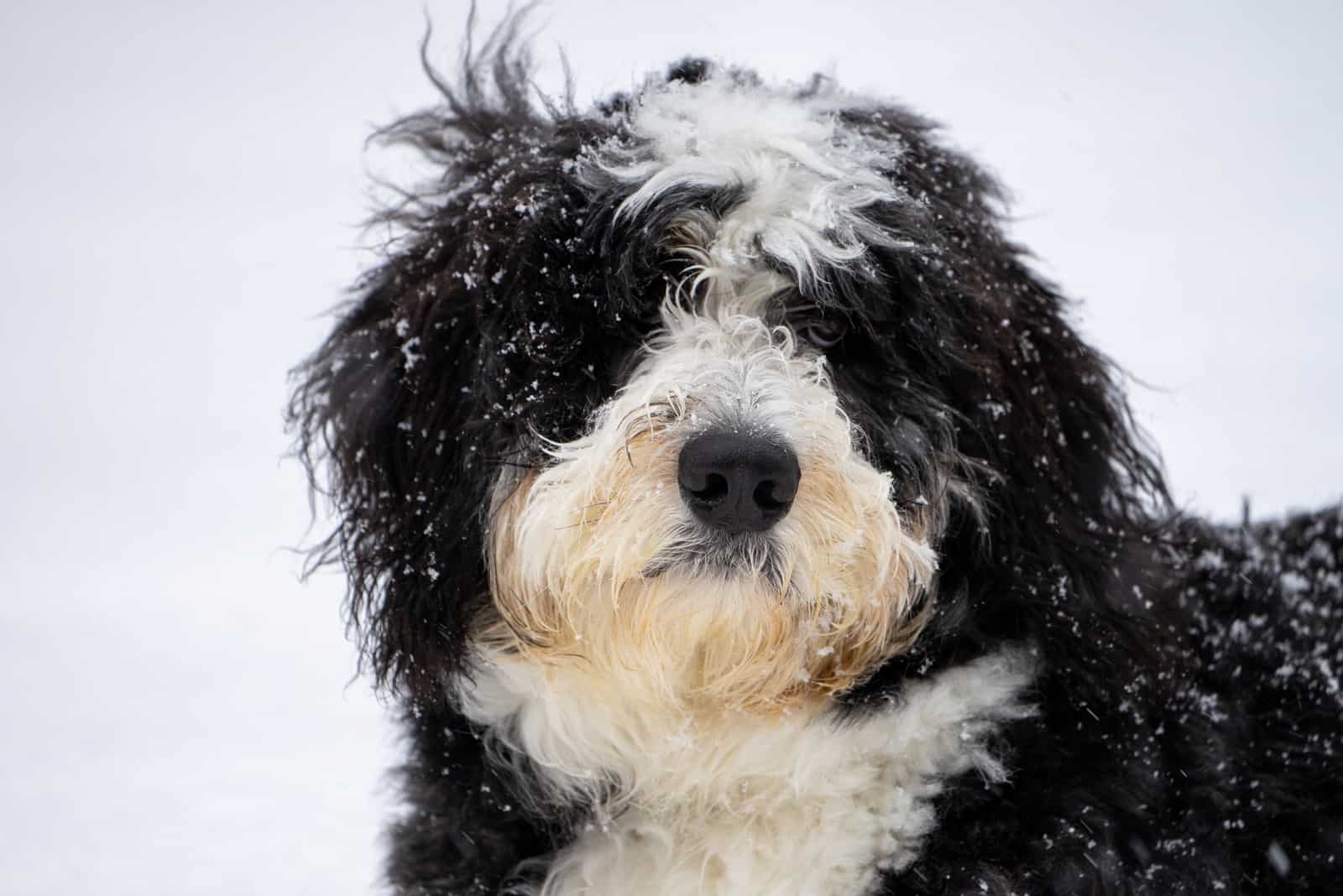
F2BB Bernedoodles, much like F1BB Bernedoodles, are a crossbreed of an F2B Bernedoodle and one purebred parent. This is a second generation cross, usually with a Poodle, so they have an additional ‘B’ in their label.
If bred with a Poodle, this is yet another low-shedding and almost certainly hypoallergenic dog breed. Also, since they are 81.25% Poodle, they have the second most Poodle genes, right behind the F1BB Bernedoodle.
An F2BB Bernedoodle will most likely have a curly coat that will require plenty of maintenance, such as brushing and bathing. You might even consider taking it to the groomer regularly.
However, if you’re looking for a hypoallergenic dog who will help keep your breathing issues at bay, this is a generation you should consider. It’s also excellent if you’re someone who hates having hair all over your furniture, floors, clothes, and car.
Most breeders won’t use the F2BB label. Instead, they’ll simply call this generation ‘multi-generation,’ as this is, technically, a fourth-generation Doodle.
If a breeder tells you they sell multi-generation Bernedoodles, always ask them what the exact generation and genetics of the pup you plan on getting is.
Multi-Generation Bernedoodles
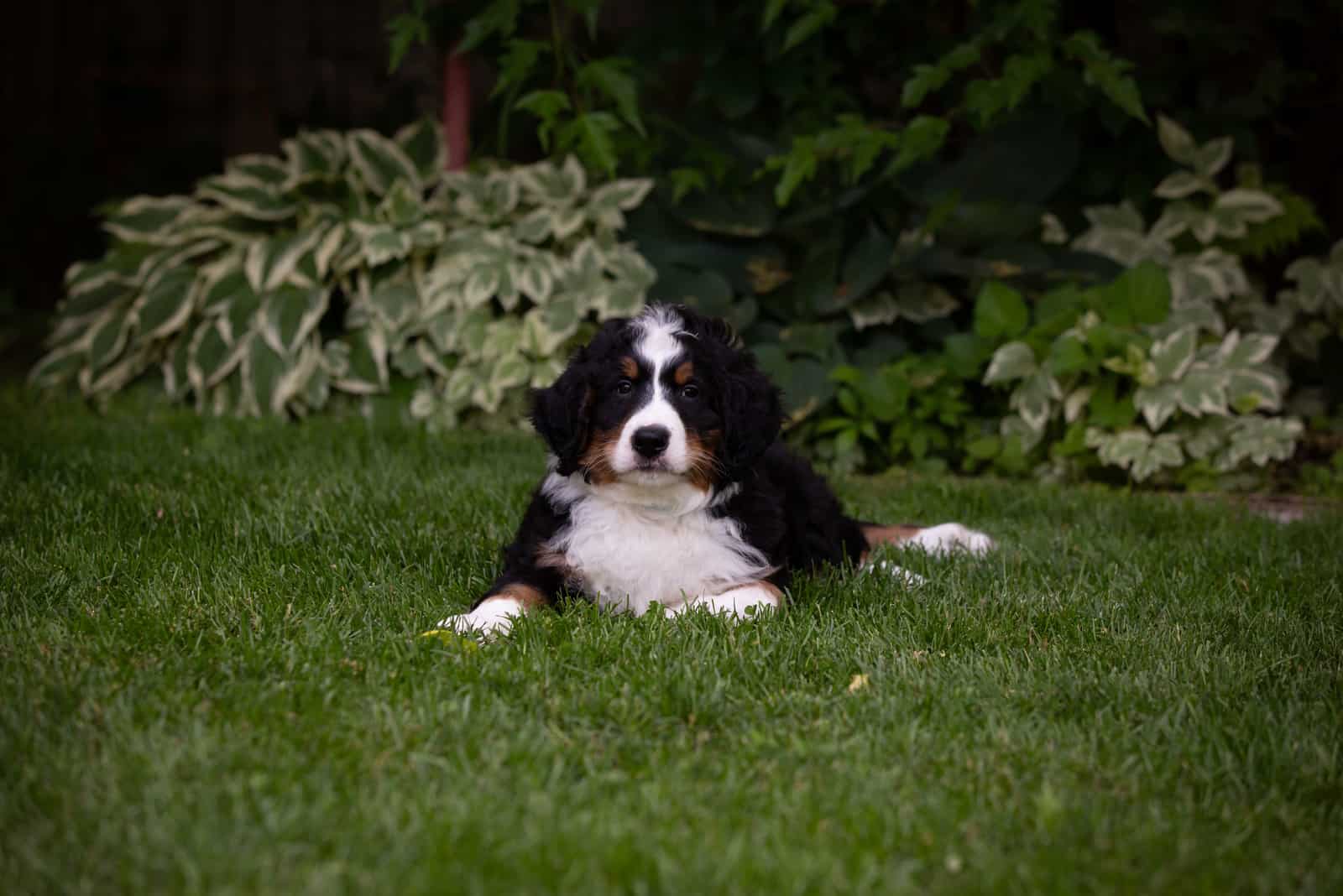
Multi-generation Bernedoodles are commonly labeled as F3, F4, F5, and so on. This is a term used to describe any Doodle further than the second-generation.
Usually, F3 Bernedoodles are the offspring of two F1B Bernedoodles. However, they can come from any parents. It isn’t rare to find a multi-generation Bernedoodle whose parents were F2 and F3 Doodles.
Most multi-generation Bernedoodles are great family dogs for people with mild dog allergies, as they can have a substantial amount of allergens.
However, their looks can vary quite a lot, especially if none of their parents is a backcross dog. Their coats can be extremely curly to almost entirely straight, depending on their genetics.
As multi-generation is the term used to describe any generation further than the second one, this means that many Bernedoodles we discussed here can be considered F3.
In fact, most breeders won’t bother writing down the exact label of their Bernedoodle puppies. Instead, they’ll simply call them a multi-generation.
It’s essential to have good communication with your breeder. They should specify which generation their puppies are, so you can know what type of dog you’re getting.
What Is The Best Bernedoodle Generation?
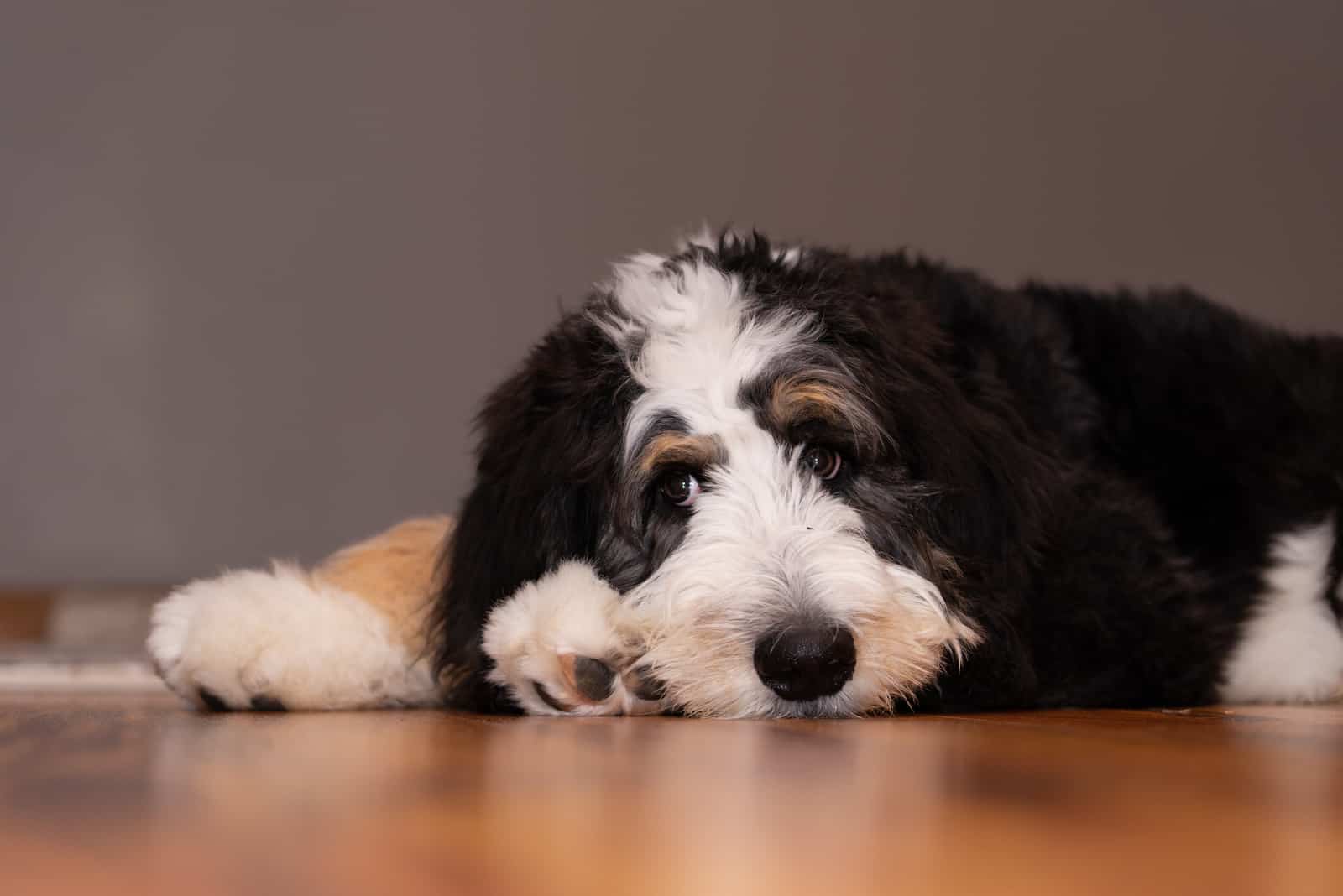
It can be very challenging to say outright what the best Bernedoodle generation is. All of them make great companion dogs that are loyal, friendly, and playful. This is the reason why they are a common choice for therapy dogs all over the world.
However, since the main reason people opt for a Bernedoodle is their hypoallergenic and low-shedding reputation, we’ll look at this feature as essential for determining what generation you should get.
If you look at only these features, then your choice should surely be either an F1B Bernedoodle, an F2B Bernedoodle, or an F1BB Bernedoodle – if one of their parents is a Poodle.
All of these dogs have plenty of Poodle characteristics, including a small amount of shedding and the low number of allergens they produce.
However, instead of looking at the generation, you might want to look at the coat type of a Bernedoodle, especially if you want a dog that is hypoallergenic.
Dogs with curly coats are typically low-shedding, meaning they will give you fewer issues than canines with straight hair. This is the main thing you should go by.
This isn’t to say that you shouldn’t get an F1 or an F2 Bernedoodle. The choice is entirely up to you and your preferences.
Keep in mind that the American Kennel Club (AKC) doesn’t recognize Bernedoodles of any generation as an official breed.
While this shouldn’t concern a casual pet owner, it might be of interest to people wanting a show dog.
Read Next: Bernedoodle Growth Chart

